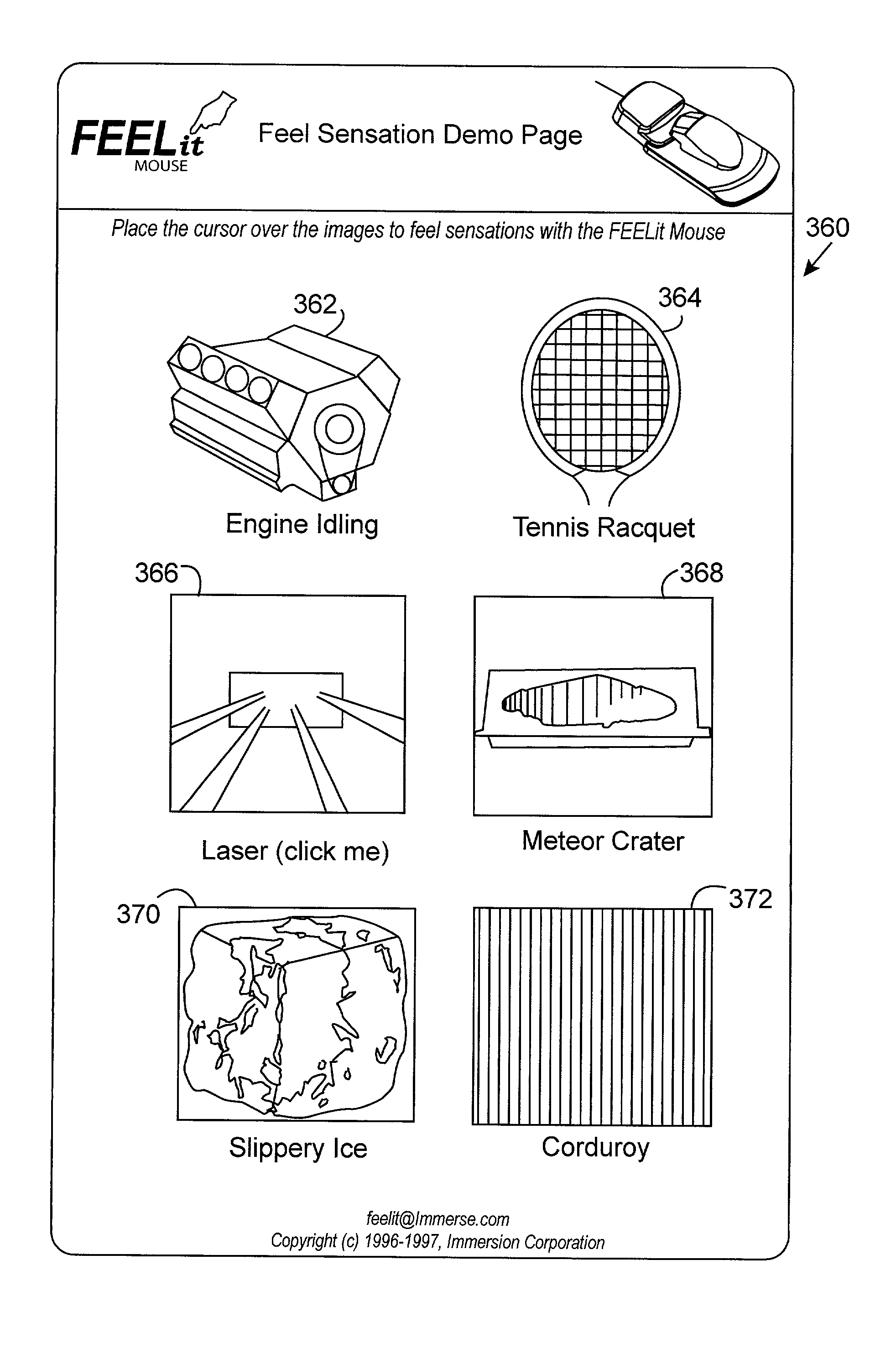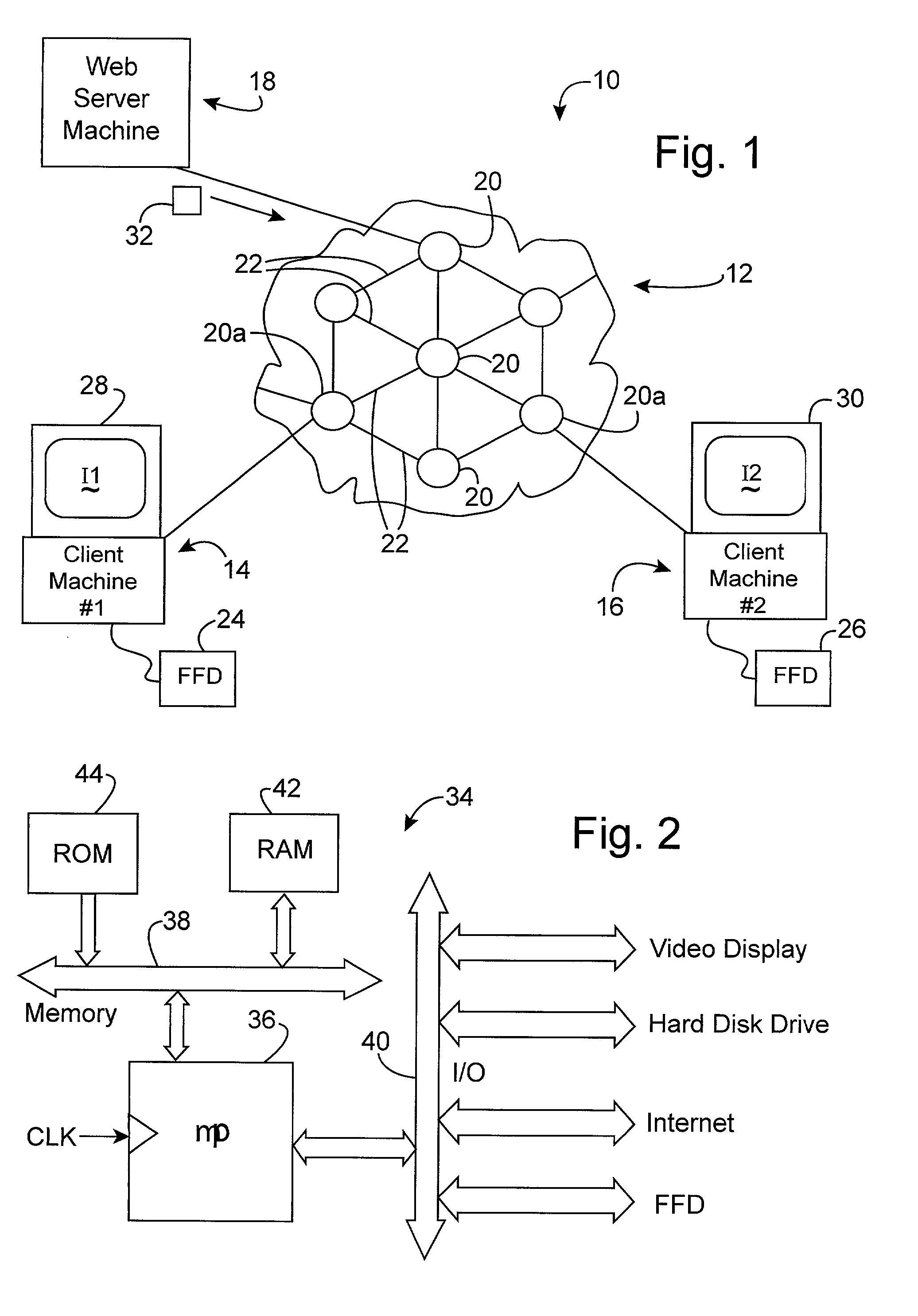Defining force sensations associated with graphical images
a technology of force sensation and graphical image, which is applied in the field of human/computer interfaces with force feedback, can solve the problems of limited use, difficult, or even impossible, and the transmission of other types of sensory data has not been well explored, so as to enhance the sensory experience of the user, richer, and more interesting. the effect of interaction
- Summary
- Abstract
- Description
- Claims
- Application Information
AI Technical Summary
Benefits of technology
Problems solved by technology
Method used
Image
Examples
embodiment
Plug-in Embodiment
[0142]Another embodiment for implementing force effects is to provide a “plug-in” extension to the web browser at the client machine, such as Netscape Navigator. The plug-in, for example, can implement authored force effects, where the plug-in handles particular force-related commands or information in a received HTML file. A plug-in may also or alternatively implement generic force effects for a web page by referring to the generic effects on the client machine when an appropriate event takes place, such as a pointer moving over a hyperlink. The plug-in software can be a proprietary extension of the web browser software developed, for example, by Immersion Corporation. A plug-in is similar in function to the ActiveX control described above.
[0143]In one embodiment, instructions are provided in the received web page which define an authored force effect for the plug-in. For example, an tag can define a force button object that will be displayed on the client machin...
PUM
 Login to View More
Login to View More Abstract
Description
Claims
Application Information
 Login to View More
Login to View More - R&D
- Intellectual Property
- Life Sciences
- Materials
- Tech Scout
- Unparalleled Data Quality
- Higher Quality Content
- 60% Fewer Hallucinations
Browse by: Latest US Patents, China's latest patents, Technical Efficacy Thesaurus, Application Domain, Technology Topic, Popular Technical Reports.
© 2025 PatSnap. All rights reserved.Legal|Privacy policy|Modern Slavery Act Transparency Statement|Sitemap|About US| Contact US: help@patsnap.com



